William Davis's Blog: Dr. Davis Infinite Health Blog, page 111
January 29, 2016
Another Wheat Belly 10-Day Grain Detox success!

Melissa shared her photos after just the 10 days of the Wheat Belly 10-Day Grain Detox.
“Wow! Loving this life. I have NO cravings! That’s unbelievable.
“Down 7.4 pounds and 5 inches.”
Down over 7 pounds in 10 days . . . and nobody around here is cutting calories, limiting portion sizes, or increasing exercise. We are simply avoiding obesogenic foods: wheat and grains.
Cutting calories or portion sizes, of course, does not eliminate cravings, but increases hunger and cravings. Cutting calories is misery, a test of willpower that makes food a constant topic in your mind. But, as Melissa experienced, removing the appetite stimulants in wheat and grains frees you from hunger. The rolling, ravenous hunger of the grain-eater is replaced by an occasional soft reminder that you might be interested in eating something in the next few hours—very different.
These are the sorts of astounding visible changes we are witnessing, even in the quick 10 days of the Wheat Belly Detox process.
The post Another Wheat Belly 10-Day Grain Detox success! appeared first on Dr. William Davis.
January 27, 2016
An Open Letter to Oprah Winfrey

Ms. Winfrey,
Can you lose weight while continuing to consume bread and other products made with wheat flour and grains? You absolutely can—though it is quite difficult physically and emotionally, requiring monumental willpower, as you already know. But I fear that you have overlooked crucial issues in your campaign for Weight Watchers and the exoneration of bread. You have, unfortunately, propagated some destructive misconceptions. And the people who you have hurt the most I suspect are the people who you would have preferred to help the most.
Losing weight by avoiding processed food products made with wheat and related grains is exceptionally easy because it means that you avoid the gliadin protein-derived opiates that stimulate appetite. The fact that you lost 26 pounds is testimony more to the power of your will than it is to the power of the Weight Watchers program. You have succeeded in losing weight—at least temporarily—despite having, I’m sure, to fight back against overwhelming hunger and cravings due to this effect of grains that you have chosen to remain in your diet. Yes: it can be done. But it is a test of willpower. Willpower wanes over time for most people, explaining why the majority of people who lose weight successfully by reducing calories and portion sizes regain the weight over time, often ending up heavier than at the start. I’d love to see you fit back into a size 4 dress, but it is far more likely that the 26 pounds you lost will return as soon as your resolve dissipates.
By embracing the Weight Watchers’ message, you have propagated the notion that people are overweight because they are gluttonous and lazy, just as government agencies claim. Americans are overweight, according to the USDA and the U.S. Department of Health and Human Services, because they eat too much and move too little. In other words, it is your fault if you struggle with weight. I believe that this is wrong. I believe the blame lies with the predatory practices of Big Food who have chosen to promote high-sugar, high-fructose corn syrup, and grain-based foods, a high-carbohydrate load that inevitably leads to weight gain. Blame also lies with organizations such as the Academy of Nutrition and Dietetics and the American Heart Association who have clung to outdated advice to cut fat and saturated fat and increase consumption of “healthy whole grains,” in effect advising Americans to create a caloric deficit by reducing fat and to fill that void with the carbohydrates and appetite-stimulating properties of grains that yield gliadin-derived opiates. Obesity on the unprecedented scale we now witness—the worst epidemic ever in the history of man—is not due to gluttony and sloth; it is due to this convergence of phenomena. Big Food companies are to blame, the U.S. government and other agencies that offered this advice are to blame. People gained weight because of bad advice, not because they are weak-willed and indulgent. (There are indeed people who have gained weight due to gluttony and sloth, but the majority of hard-working, health-minded Americans have gained weight despite doing what they thought was “right,” given such guidelines.)
Your endorsement of a calorie-cutting, portion-limiting program thereby reinforces the false notion that people are overweight and that it’s their own fault.
Another very important issue that you should be aware of with your reliance on wheat- and grain-based products: Be prepared to have a future of health problems. Populations who do not consume grains enjoy freedom from autoimmune diseases like rheumatoid arthritis, lupus, and psoriasis; type 2 diabetes; hypertension; acid reflux, irritable bowel syndrome, and constipation; coronary heart disease; depression and suicide; and bear a far lesser burden of cancer and dementia. These are the “diseases of civilization” that plague modern humans eating modern diets, but not societies that do not consume such Western foods. With your dietary approach, you have in effect endorsed a style of eating that can, with difficulty, achieve weight loss, but propagates risk for all of these modern diseases.
Segments of the population that have historically been exposed to grains and sugars via agriculture have less susceptibility to their adverse effects. This means that people of European and Asian origin have the advantage of partial adaptation to their consumption since they have existed in agricultural societies for 10,000 years. (Adaptation to grains and sugar is never complete, else we’d have no type 2 diabetes.) Native Americans, native Australian Aboriginal populations, populations of the South Pacific Islands, New Zealand and New Guinea natives, African Americans, and native Africans develop explosive levels of the “diseases of civilization” when exposed to Western foods, especially grains and sugars. This explains why, for instance, the Pima Indians of Arizona have the highest rate of type 2 diabetes in the world. It explains why primitive populations in the Amazonian basin develop rampant obesity and diabetes in as short as 2 or 3 years when exposed to Western foods. It explains why African Americans living in the U.S. have the worst incidence of type 2 diabetes, obesity, hypertension, stroke, and heart disease compared to other ethic groups in the U.S. The message that groups like this are overweight and that it’s their own fault is counterproductive and wrong—they, in fact, have been the most deeply victimized by bad dietary information. Sadly, these populations are also the most subject to predatory advertising practices by Big Food—once again, it is NOT the fault of the individual.
Your message that Weight Watchers “works” and that bread can be a part of a diet program thereby propagates destructive and widely-held misconceptions that are increasingly crippling the health of Americans. I fear you have failed in your due diligence, embracing an outdated program based on government pronouncements based more on politics, scientific misinterpretation, and ignorance than an objective review of the science. You may have increased shareholder value of the Weight Watchers’ brand, but you have done tremendous harm to millions of people who trust your judgment.
Perhaps it’s not too late to make amends: Sell your shares, learn and reflect on your mistakes, make the necessary apologies, come to understand that Americans have been misinformed, exploited, and used—refuse to be a part of it. And understand that solutions for weight and health will not come through conventional providers of dietary advice, whether government or private, as the profit motive is too strong and exerts too much influence. The solutions for weight loss and health are, in truth, simple, accessible to virtually everyone, and come at almost no cost. But those solutions won’t make anyone rich.
William Davis, MD
The post An Open Letter to Oprah Winfrey appeared first on Dr. William Davis.
January 26, 2016
Another Wheat Belly baby!
Brianna shared her story with me a couple of years ago after she had lost 49 pounds living the Wheat Belly lifestyle:

Unfortunately, after learning that she was pregnant, she went off track and gained a lot of weight. She recently got back on the Wheat Belly wagon after delivering her baby and again shared her experience, with her 4 month results here:

“FOUR MONTHS no wheat, size 22 to 16 and still going. I seriously can’t believe it.
“I have PCOS [polycystic ovarian syndrome]. After 7 years of trying to conceive, six months following Wheat Belly last time I conceived twice, with second one resulting in a baby.”
Despite Brianna’s ups and downs, she now understands just how much control she has over weight and health. Females without PCOS can have many of the same problems as those with PCOS, but ladies with the genetic predisposition to PCOS have all the problems—facial and body hair, high testosterone levels, infertility, hypertension, metabolic syndrome, type 2 diabetes—much more readily. In addition to allowing her to conceive, getting back on the Wheat Belly lifestyle has also reduced Brianna’s testosterone level to normal, dropped a sky-high estrogen level (a risk for breast cancer) to normal, a prolactin level to normal, liver tests to normal.
The medical “solutions” to PCOS? Eat less, exercise more, then prescribe metformin for blood sugar, antihypertensive drugs for blood pressure, drugs to reduce testosterone, clomiphene and hormone injections for infertility, topical drugs to slow hair growth—PCOS is a financial bonanza for the medical system, although the woman suffers awful side-effects, endures the excess weight, and is exposed to thousands and thousands of dollars of expenses.
Yet Brianna now has a child, is losing weight at a rapid clip, and is reversing all the other PCOS phenomena—at virtually no cost.
The post Another Wheat Belly baby! appeared first on Dr. William Davis.
Brain Drain

I find it incredible that, buried in the common advice to consume more “healthy whole grains,” is advice to consume what is, in effect, a mind-active drug. Wheat and grain consumption have very real effects on the brain, thinking, and emotions, some of which are reversible, some of which are permanent. Many of the effects are due to the gliadin protein of wheat, rye, and barley. Dr. Alessio Fasano has mapped out the segments of the gliadin protein that, upon partial digestion (humans are incapable of complete digestion of this grass protein) yield the following peptides (protein fragments):
Red = direct cytotoxic segment (intestinal cell-destroying)
Light green = immune-stimulating segment (responsible for celiac disease)
Blue = bowel permeability segment (via zonulin activation)
Dark green = inflammatory interleukin release
Interspersed among these segments are shorter, 4- to 5-amino acid long segments (not color-coded) that are act as the opiates (opioids) that exert mind effects. Gliadin therefore exerts myriad disease effects, among which are powerful mind effects that manifest in different ways depending on individual susceptibility.
Below is an excerpt from the Wheat Belly Total Health book discussing the reversible mind effects of wheat and grains.
It’s Not Your Imagination: Reversible Mind and Brain Effects of Grains
Reversible mind effects begin with the gliadin proteins of wheat, rye, and barley that undergo digestion to smaller 4- or 5-amino acid-long peptides, small enough to penetrate into the brain and bind to opiate receptors (Zioudrou 1970). The effects of these peptides, dubbed “exorphins,” or exogenously derived morphine-like compounds, vary depending on individual susceptibility. In some conditions, a reversible autoimmune process has also been documented (positive gliadin antibody). The conditions associated with these phenomena include:
Appetite-stimulation—Grain derived exorphins trigger the grain consumer to take in 400 more calories per day, every day. This is an average value; some people consume more, others less. At worst, it can cause calorie intake to be 1000 or more calories per day or higher and trigger food obsessions or other addictive food behaviors. Appetite is specifically stimulated for carbohydrates, such as pretzels, corn chips, and cookies, and, to a lesser degree, for fat. And the effect tends to be addictive, with cyclic and recurring desire for such foods driving dietary habits, even dominating thoughts and fantasies. Rid yourself of gliadin derived opiates and calorie intake drops by 400 calories per day (Bardella 2000). Food obsessions and addictive food relationships are also typically reduced or completely eliminated.
Mind “fog”—Disrupted concentration, inability to focus, impaired learning, impaired decision-making ability, and sleepiness are exceptionally common after consuming wheat, rye, and barley. Gliadin derived opiates are the most likely culprits for these effects, given their known ability to affect the mind. It’s also likely that the blood sugar fluctuations—high, then low—an effect shared by all grains, likely contribute, especially the low of hypoglycemia.
Attention deficit hyperactivity disorder and autistic spectrum disorder—While these disorders are unrelated, they share a similar response to gliadin derived opiates. Children (and now adults, since so many children in the growing epidemics of these conditions are now reaching adulthood) experience behavioral outbursts, such as temper tantrums or emotional “storms,” without reason, and impaired capacity to sustain attention. Kids with these conditions begin with impaired ability to learn and pay attention for more than a few seconds or minutes; grain derived opiates just make it worse (Vojdani 2004; Lahat 2000). A recent analysis demonstrated that kids with autism lack the markers for celiac disease (such as transglutaminase antibody), but they do have increased levels of IgG antibodies to gliadin, especially if abdominal symptoms like diarrhea are present (Lau 2013).
Binge eating disorder and bulimia—People with binge eating disorder tend to eat in large binges, eating well beyond their need, unresponsive to signals that turn off appetite, feeling ashamed at their lack of restraint. Bulimia is a similar condition, with binges followed typically by “purging” the excessive quantity of food from their stomachs by vomiting. People with these eating disorders describe intrusive, 24-hour-a-day food obsessions that occur even after finishing a large meal or during the night, triggering nighttime binges. Both conditions are socially incapacitating, ruin relationships, are associated with low self esteem, and rot the teeth of the bulimic sufferer who puts a finger in the back of her throat to bring up food, exposing tooth enamel to corrosive stomach acid.
Paranoid schizophrenia—The worsening of paranoia, auditory hallucinations (hearing voices and receiving warnings or commands), and social disengagement were among the first observations made with wheat consumption, attributable to the gliadin protein derived opiates (Dohan 1978) and since corroborated by a number of psychiatric studies (Okusaga 2013; Dickerson 2010). This effect may be confined to schizophrenics who express an autoimmune response to the gliadin protein, the group most likely to improve with wheat, rye, and barley avoidance (Kalaydijan 2006; Jackson 2012).
Bipolar illness—We know that people with bipolar illness express higher levels of antibodies to the gliadin protein, similar to the phenomenon observed in schizophrenics (Dickerson 2011; Dickerson 2012). Gliadin derived opiate peptides likely also play a role in generating the distortions in judgment and reality experienced with this condition.
Depression—If there is predisposition for depression, grains, especially wheat, rye, barley, and corn, can magnify or unmask the tendency (Volta 2012). Depression due to the gliadin and prolamin protein derived opiates can be mild, resulting in a pervasive feeling of unhappiness and lack of interest, or it can be incapacitating and life threatening, complete with obsessive thoughts of suicide or self-harm. Both wheat and corn are also responsible for reductions in brain serotonin that regulate mood (Choi 2009).
Obsessive-compulsive disorder—Very similar to the food obsessions experienced by people with binge eating disorder, the person with obsessive-compulsive disorder helplessly gives in to the impulse to obsessively and compulsively perform some action or engage in some thought, behaviors that have been associated with wheat consumption (Sharma 2011). It might be compulsive hand washing, or housecleaning, or checking and rechecking (and rechecking and rechecking) figures in a ledger. Being locked into such behavioral loops can be debilitating for the sufferer, as these rituals can dominate thought and behavior, as well as booby-trap success in school and work and disrupt the health of relationships.
A world of research has yet to be performed to further explore these mind-altering phenomena that develop in people who follow advice to consume more grains, studies that may reveal, for instance, via MRI, PET, and other brain imaging modalities, why and how schizophrenics tend to suffer more auditory hallucinations with grain consumption, or why kids with autistic spectrum disorder experience impaired attention span. Notably, while some mind effects are associated with an immune response against one or more grain proteins, many mind effects do not. But remember: If grains cause such deteriorations of mind control, it also means that you have gained an understanding of how to undo all these effects or, as one of Keanu Reeve’s fellow rebels in the Matrix remarks, “Buckle your seatbelt, Dorothy, ‘cause Kansas is going bye-bye.”
The post Brain Drain appeared first on Dr. William Davis.
January 25, 2016
Karen reversed aches, rashes, headaches, and weight with the Wheat Belly lifestyle

Karen shared her photos and health experience with the Wheat Belly lifestyle:
“My Wheat Belly story started in October of 2014. I was feeling aches and pains, especially to my lower back, knees and hips. I had always had skin issues, too, especially rosacea, in the past few years. Headaches, migraine, cluster or tension ones have plagued me my whole adult life. I just couldn’t imagine what I would feel like in 5 or 10 years.
“I have had weight issues my whole life. I tried to lose weight again and, over a six-month period, lost 15 lbs. Then, in September, 2014, I happened upon an episode of Dr. Oz’s show where Dr. Davis was talking about the Wheat Belly book and program. I related to everything he said. It was how I felt, what I experienced, etc. I got the book and read it immediately and reading the book confirmed what I had heard on the show. I began the program in October, 2014 and I can honestly say it has changed my life. I cannot believe how much better I feel. Headaches are gone. My skin issues come and go in conjunction with how much dairy I have, but for the most part are gone. My aches and pains are gone and to date I have lost a total of 101 lbs. All this has happened without exercise. In the past couple of months, I have started walking every day and include that in my daily routine.
“I don’t feel hungry and I don’t look for food. When I grocery shop, I am constantly reading all the labels. It is amazing how many items have hidden wheat and sugar in them. I believe wholeheartedly that the sugar and grain truly impacted my body and triggered me to eat more than I needed and definitely was the sole cause of my life-long weight issues. I know that sugar and grain were my opiates. I can truly say I don’t miss them. On the occasion I have lapsed due to social settings, the headaches and sluggishness are right back. Trust me, it is not worth feeling like crap. I have surpassed my goal of 80 pounds in one year and now realize I can definitely continue with my change in lifestyle.
“I want to thank you Dr. Davis from the bottom of my heart for the change in me both as a healthier and happier person.”
Isn’t that terrific? Freed from chronic pain, skin rashes, headaches, and an extraordinary quantity of weight, while also being freed of the blundering misdiagnoses and “treatments” of the medical system—these are big deals to Karen and others who undergo such dramatic health transformations. She has also experienced the freedom from incessant appetite of the wheat/grain eater, now able to consciously eat and choose foods for sustenance and health.
Think of the years of pain that Karen has been spared, all the downstream health problems like diabetes she has avoided, all the expense and side-effects from the awful excuse that passes for medical care she no longer needs. The Wheat Belly lifestyle is nothing short of life-transforming for so many people—at virtually no cost.
The post Karen reversed aches, rashes, headaches, and weight with the Wheat Belly lifestyle appeared first on Dr. William Davis.
January 23, 2016
Liana’s breathtaking Wheat Belly experience

Liana shared her “before” and “after” Wheat Belly photos and experience:
“Looking better and feeling better since cutting out wheat and most grains!
“The face swelling goes away within days. The weight loss I have to work hard for and be intentional about (hypothyroidism and PCOS). I’m shooting for about 2 pounds weight loss per week and so far, so good. Health-wise, I’m not nearly so tired all the time. My joints feel better and less achy, especially the knees. Skin is much healthier.”
As Liana points out, the facial changes are among the earliest of changes we see in the Wheat Belly lifestyle, especially the combination strategies of the Wheat Belly 10-Day Grain Detox. Just look at the change in facial appearance that she has enjoyed with this lifestyle, enjoying the inflammation-, edema-, as well as weight-reducing effects—she is practically unrecognizable when she rejects the conventional dietary advice to consume wheat and grains.
I cannot repeat this enough: reducing calories would not account for changes in appearance and health like Liana’s, nor would reducing portion size or adding 30 minutes to her exercise routine. The ONLY strategy that accomplishes such over-the-top, jaw-dropping, head-turning changes is . . . the elimination of the most destructive and inflammatory foods ever introduced into the human diet: wheat and grains.
To drive home the point further, here are more of Liana’s “befores”:

The post Liana’s breathtaking Wheat Belly experience appeared first on Dr. William Davis.
January 20, 2016
Wheat Belly 10-Day Grain Detox: Candice

The Wheat Belly 10-Day Grain Detox that combines the eating style of Wheat Belly with nutritional supplement/bowel flora restoration efforts introduced in the Wheat Belly Total Health book is achieving extraordinary results—even within the brief 10-day period of the Detox.
Here is what happened to Candice:
“Here are my 10-day Detox results. I feel so great, I have so much more energy, and I’m down 6.5 lbs! I’m really glad I did the before & after pics so I can really see the difference.”
You can readily see the changes in Candice’s face: deflated cheeks, less facial edema, reduced around-the-eye puffiness and larger eyes. I predict that, in another few weeks, Candice’s friends and family will do a double-take, wondering why she looks so dramatically different and asking her whether she underwent plastic surgery!
But these are the changes we are seeing every day around here, accelerated by introducing ALL the Wheat Belly 10-Day Grain Detox strategies at the start. These are the sorts of changes in appearance—and health—that CANNOT be achieved by reducing calories, eating smaller portion sizes, or exercise. This is what you achieve by removing the destructive health effects of wheat and grains while correcting all the unhealthy phenomena acquired from years of their consumption. And it is powerful—and incredibly easy.
The post Wheat Belly 10-Day Grain Detox: Candice appeared first on Dr. William Davis.
January 16, 2016
Mutant Ninja Grasses

There is no shortage of confusion in the world of grains, much of it due to the half-truths and smokescreens thrown up as damage control by the grain industry. After all, the world of grains in North America is a trillion dollar per year business—just a drop of a few percentage points in demands can spell billions of dollars per year in reduced revenues.
But the story behind the changes introduced into wheat and grains by geneticists and agribusiness are really relatively straightforward. Be armed with accurate information so that you are not lulled by their marketing tactics to ever wander back and lose all the health gains you have made.
Here is another excerpt from the Wheat Belly Total Health book, the Wheat Belly book that lays out the entire collection of arguments against wheat and grains, both modern and traditional.
“The seeds of grasses, known to us more familiarly as ‘grains’ or ‘cereals,’ have always been a problem for us non-ruminant creatures. But then busy geneticists and agribusiness got into the act. That’s when grains went from bad to worse.
“Readers of the original Wheat Belly know that modern wheat is no longer the 4½-foot tall traditional plant we all remember; it is now an 18-inch tall plant with a short, thick stalk, long seed head, larger seeds, yielding many times more per acre than traditional predecessors. This high-yield strain of wheat, now the darling of agribusiness, was created prior to the methods of genetic modification, created instead by repetitive hybridizations, mating with non-wheat grasses to introduce new genes (wheat is a grass, after all), and the methods of mutagenesis, the use of high-dose x-ray, gamma rays, and chemicals to induce mutations. Yes: modern wheat is, to a considerable degree, a grass that contains an array of mutations, some of which have been mapped and identified, many of which have not. Such uncertainties never faze agribusiness, however. Unique mutated proteins? No problem: The USDA and FDA say they’re okay, too, perfectly fine for public consumption.
“Over the years, there have been many efforts to genetically modify (GM) wheat, i.e., use gene splicing technology to insert or delete a gene. However, public resistance has dampened efforts to bring GM wheat to market, so no wheat currently sold is, in the terminology of genetics, ‘genetically-modified.’ (There have been recent industry rumblings, however, that make the prospect of true GM wheat a probable reality near future.) All the changes introduced into modern wheat are the results of methods that predate GM. This does not mean that the methods used to change wheat were benign; in fact, the crude and imprecise methods used to change wheat, such as chemical mutagenesis, have potential to be worse than genetic modification, yielding a greater number of unanticipated changes in genetic code than the handful introduced through gene-splicing (Batista 2008).
“Corn and rice, on the other hand, have been genetically modified, in addition to undergoing changes that predate GM. Genetic-modification of corn, for instance, introduced genes to make it resistant to the herbicide glyphosate and for Bacillus thurigiensis (Bt) toxin that kills insects, while rice has been genetically-modified to make it resistant to the herbicide, glufosinate, and to express beta carotene (‘Golden Rice’). Problem: While, in theory, the notion of just inserting one silly gene seems simple and straightforward, it is anything but. The methods of gene insertion remain crude. The site of insertion—-which chromosome, within or alongside other genes, disruption of epigenetic effects that control gene expression, etc.—-cannot be controlled with current technology. And it’s misleading to say that only one gene is inserted, as the methods used usually require several genes to be inserted. (We the nature of specific changes in GM grains is discussed in the next chapter.)
“Wheat, corn, and rice—-50% of the human diet in the 21st century—-are not the wheat, corn, and rice of the twentieth century. They’re not the wheat, corn, and rice of the Middle Ages, nor of the Bible, nor of the Egyptian empire, nor the same as that harvested by those early hungry humans. They are what I call ‘Frankengrains,’ hybridized, mutated, genetically modified to suit the desires of agribusiness, now available at a supermarket, convenience store, or school near you.”
The post Mutant Ninja Grasses appeared first on Dr. William Davis.
January 11, 2016
Elle learns how awful gluten-free products can be

Elle shared her photos and story of unfolding results living the Wheat Belly lifestyle. Her story is a terrific example of why this lifestyle does not include gluten-free foods made with junk carbohydrates.
“Wheat Belly has changed my life. It was my gastroenterologist who suggested I do one month of gluten-free to see how I felt after complaining to him of years of awful feelings. During the second week I was completely gluten-free and basically raw and all natural, I couldn’t believe how I was feeling, how the weight was dropping off and to my biggest surprise, years of pain was disappearing! After the first month, I started to buy the ‘gluten free’ products and gained all the weight back that I had lost, plus more.
“I knew of the Wheat Belly book and did a search on line, did some research, bought the book…needless to say, I don’t buy ‘gluten-free’ products anymore!
“I can remember since I was a child having a belly, a round face, eyes swollen, sleeping all the time, never rested, so tired, foggy brain. As I got older, I battled with hypothyroidism. This past year has been the best it has ever been with my thyroid. I’m on the lowest dosage of my hormone I’ve ever been on AND it doesn’t fluctuate causing me to constantly have the dosage changed.
“I am grateful for all who have shared their stories and pictures and wanted to share my story. We are in this together. It feels amazing to be happy. January, 2015 I was a size 18. Today I tried on a size 12—I’ve NEVER been a size 12. And I’ve gone down a whole shoe size!”
Elle looks different and feels different minus the inflammation-provoking, visceral fat-triggering, high blood sugars of grains. Even better, she also learned just how destructive gluten-free foods made with the common replacement ingredients, cornstarch, rice flour, tapioca starch, and potato flour can be.
She has been freed from the skin/facial inflammation of grains, the mind effects of gliadin-derived opiates and inflammation, and the thyroid inflammation from the gliadin protein. And, as you can judge just by looking at her “after” photo, she is on her way to perfect health. The recently released Dietary Guidelines for Americans may tell us to load up on grains every day, at every meal, but you would be FAR healthier by ignoring such awful, destructive, unhealthy advice.
The post Elle learns how awful gluten-free products can be appeared first on Dr. William Davis.
January 10, 2016
How to use the Wheat Belly books
There are 5 books in the entire Wheat Belly series dating back to September, 2011. It’s been a glorious few years watching so many people experience spectacular health and weight transformations, many of which are highlighted here on the pages of this Wheat Belly Blog, as well as the Official Wheat Belly Facebook page.
You seasoned Wheat Belliers already know a lot about navigating the different content of the Wheat Belly books. But we’ve had so many newcomers that I thought it would be helpful to discuss how and when each of the Wheat Belly books can be used to derive maximum benefit.
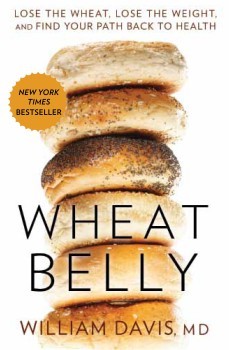
This is the original Wheat Belly book that upset dietitians, caused doors to be slammed in the corridors of Big Food companies, and the USDA commissioner to pop Tums every couple of hours because it picked on wheat, the grain held in highest regard among food manufacturers and providers of conventional dietary advice. Wheat Belly introduced the world to modern high-yield, semi-dwarf wheat, the man-made 18-inch tall plant that wreaks extraordinarily harmful effects on humans consuming it.
Read this book if you want to understand what has happened to modern wheat at the hands of geneticists and agribusiness to take something not good for health (traditional wheat) and convert it into the most destructive component of the modern diet.
30 recipes are included.
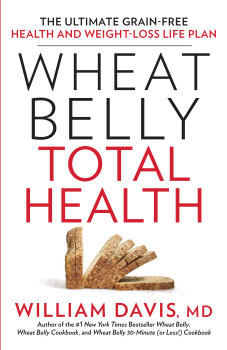
Wheat Belly Total Health took the Wheat Belly arguments further, rejecting all seeds of grasses–“grains”–and discussing why consuming them was a dietary disaster of the largest order. A little heavier on the science, reading this book provides the scientific rationale to explain why the Wheat Belly lifestyle achieves such incredible benefits.
This is the book to read if you also want to stack the odds in your favor of fully reversing health conditions such as autoimmune diseases, type 2 diabetes, high cholesterol or triglycerides, neurological diseases, skin rashes, and many others. This is also the book that includes an extensive discussion of how to break a stubborn weight plateau.
There is a section on what I call “functional recipes,” i.e., recipes not for everyday foods but to create specific foods that provide health advantages, such as magnesium water, fermented vegetables, yogurts, and kefirs, and bone broths and soups.
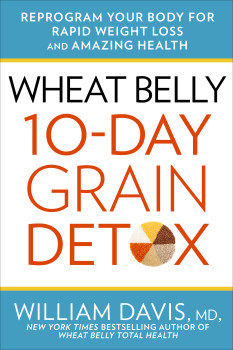
I wrote the Wheat Belly 10-Day Grain Detox for people who don’t really care to hear the rationale and science but just want to get up and running on their Wheat Belly lifestyle ASAP. It is also designed to help anyone who has fallen off the bandwagon to get back on as quickly and confidently as possible. Step-by-step, meal-by-meal, the 10-Day Grain Detox provides the menu plan and strategies to easily incorporate the nutritional supplements that are part of the program. There are also recipes (the Great Persuaders) that can be used to persuade any naysayers in the household.
We have been launching periodic 10-Day Grain Detox Challenges so that readers can join groups of people all detoxing at the same time. There is also an online e-course for anyone wishing to have more support through their Wheat Belly Detox program.
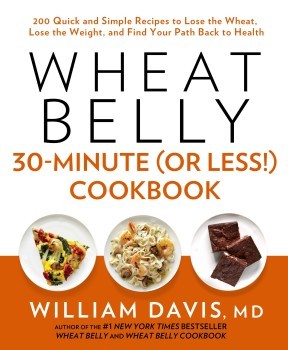
The Wheat Belly 30-Minute (Or Less!) Cookbook helps make the Wheat Belly lifestyle as quick and easy as possible. In addition to easy recipes for breakfast, lunch, main courses, and snacks, there are recipes for baking mixes, basic breads, pita chips, wraps, and tortillas. There is also an entire section devoted to recipes for sauces (barbecue, marinara, Thai red curry, tartar and others), salad dressings (Sun-Dried Tomato, Creamy Tomato Cilantro, Spicy Cajun Mayo, others), and jams and butters.
There are also menus for special occasions such as Movie Night, Pub Night, and Romantic Evening.
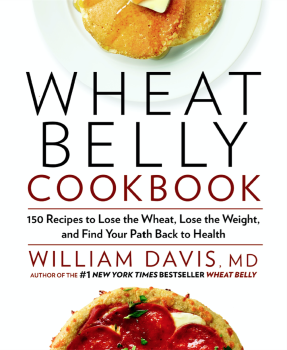
The original Wheat Belly Cookbook is packed with 150 recipes for breakfast, lunch, main courses, snacks, and desserts. There is an extensive section called The Wheat Belly Bakery that helps you recreate the baked products, such as Rye Bread, Soft Pretzels, Walnut Raisin Bread, Strawberry Shortcake, and Mocha Walnut Brownies so that you can meet any need such as entertaining friends, pleasing kids, or filling out a holiday menu.
The post How to use the Wheat Belly books appeared first on Dr. William Davis.
Dr. Davis Infinite Health Blog
Recognize that this i The insights and strategies you can learn about in Dr. Davis' Infinite Health Blog are those that you can put to work to regain magnificent health, slenderness, and youthfulness.
Recognize that this is NOT what your doctor or the healthcare system provides, as they are mostly interested in dispensing pharmaceuticals and procedures to generate revenues. The healthcare INDUSTRY is not concerned with health--you must therefore take the reins yourself.
Dr. Davis focuses on:
--Real, powerful nutritional strategies
--Addresing nutrient deficiencies unique to modern lifestyles
--Deep insights into rebuilding the microbiome disrupted by so many modern factors
Follow Dr. Davis here and on social media and you can witness the extraordinary successes people enjoy on his programs. ...more
- William Davis's profile
- 160 followers



